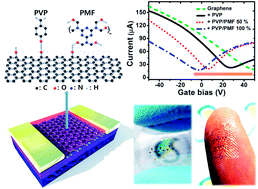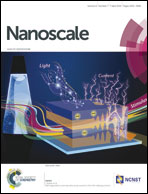Poly-4-vinylphenol and poly(melamine-co-formaldehyde)-based graphene passivation method for flexible, wearable and transparent electronics
Abstract
Next generation graphene-based electronics essentially need a dielectric layer with several requirements such as high flexibility, high transparency, and low process temperature. Here, we propose and investigate a flexible and transparent poly-4-vinylphenol and poly(melamine-co-formaldehyde) (PVP/PMF) insulating layer to achieve intrinsic graphene and an excellent gate dielectric layer at sub 200 °C. Chemical and electrical effects of PVP/PMF layer on graphene as well as its dielectric property are systematically investigated through various measurements by adjusting the ratio of PVP to PMF and annealing temperature. The optimized PVP/PMF insulating layer not only removes the native –OH functional groups which work as electron-withdrawing agents on graphene (Dirac point close to zero) but also shows an excellent dielectric property (low hysteresis voltage). Finally, a flexible, wearable, and transparent (95.8%) graphene transistor with Dirac point close to zero is demonstrated on polyethylene terephthalate (PET) substrate by exploiting PVP/PMF layer which can be scaled down to 20 nm.


 Please wait while we load your content...
Please wait while we load your content...